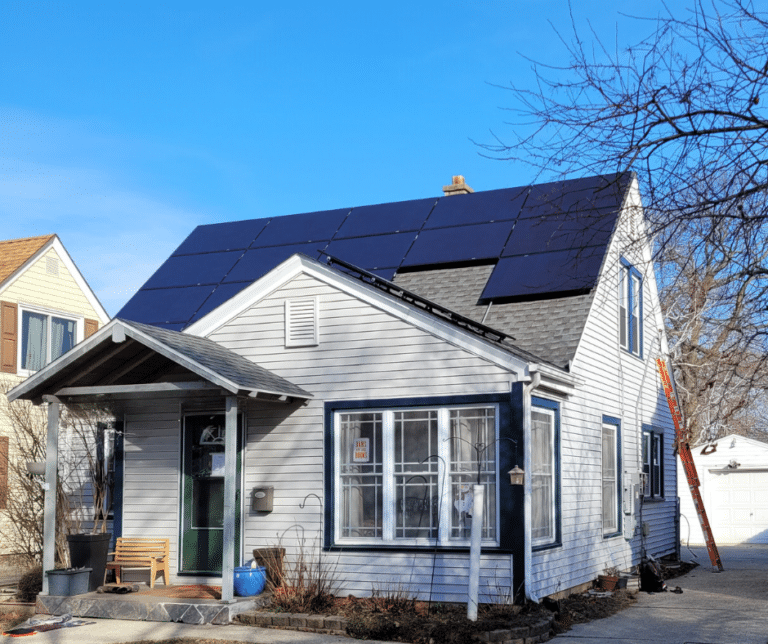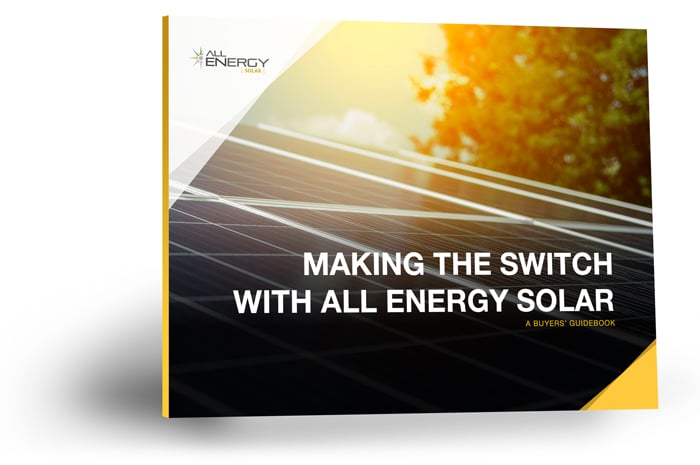With solar now the fastest growing electricity source in the world, it’s easy to imagine (and see!) row after row of solar panels going up on houses, businesses, and in open fields throughout the country. Each one of these panels is taking free and limitless energy from the sun and converting it into easily accessible energy for our day-to-day use. Is this vision of limitless clean energy too good to be true?

Detractors to solar have long held that solar panels bring with them their own set of problems. While we’ve busted many of these myths over the years, one that has been rearing its ugly head lately is that solar panels have the ability to create a mountain of waste as they reach their expected 30 year life span, speculating that they will fill up landfills when their useful era expires. In addition, others have claimed that dangerous materials in solar panels bring a new set of problems as toxic runoff from solar panels invade our cities, backyards, and farm fields.
Fortunately, both of these myths can be easily and absolutely busted once and for all thanks to a new study from the National Renewable Energy Laboratory (NREL) in Colorado that was recently published in the journal Nature Physics, a prestigious, peer-reviewed journal.
Debunking the myth of solar waste
With solar only accounting for 4.5% of our global electricity currently, the report acknowledges massive growth of solar capacity is needed worldwide in order to tame global overheating. It goes on to say that growing to the 75 terawatts of solar that would be needed to decarbonize our energy would cause 160 million metric tons of solar panel waste to be accumulated by 2050. This may sound like a lot, but it represents an incredibly small amount when compared to other sources of waste (municipal waste, coal ash, plastic waste, e-waste, and oily sludge). In fact, the waste from coal ash alone would be 800 times greater than what we might see from solar panel waste.
And there’s even more to this story. This 160 million metric tons of waste would be created under the assumption that solar panels are not being, and will not be recycled, as they age out. The truth is, solar panels are already highly recyclable, are currently being recycled, and will continue to become even more easy to recycle as time goes on, with a growing recycling industry developing around the recovery of materials for reuse. The bulk of solar panels consists of glass, plastic, and aluminum: three materials that are highly recycled already and have substantial markets in place to ensure these materials don’t end up in landfills. As we see more solar panels reach the end of their lifespan, we will see a greater need to dispose of them in a safe and sustainable way. Companies such as Solarcycle are helping to lead the charge to bring down the cost and accessibility of panel recycling while the state of Illinois is considering banning panels from being thrown away entirely.
Debunking the myth of solar panel toxicity
In addition to the myth of a fantastical pile of solar panels filling up landfills, the NREL researchers also helped debunk another pesky myth in the same article. Solar detractors have spent a lot of time complaining that solar panels contain toxic materials such as lead, arsenic, gallium, germanium, and hexavalent chromium. They claim that these materials can “run-off” from solar panels, creating toxic waste in your own backyard, or creating an even larger concentration of toxic waste as panels get thrown into the landfill (the landfill myth being already debunked above).
In fact, the researchers found that the most common types of photovoltaic panels contained “almost none” of these toxins. Some modules contain less than 0.1% from the solder needed to fuse components together, but the authors suggest that even this is being phased out by the manufacturers. Other substances that appear in small amounts, such as cadmium, are extremely stable, valuable, and can be easily recaptured in recycling processes.With these two myths debunked, we can safely say that solar is the world’s best bet for a clean and sustainable future, and it’s getting better by the day! Contact us today to see how we can help you get started.


